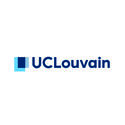In short
Today, emerging toxins give the need for new reference materials (pure standards, embedded in cereal, spice, juice, kidney, liver) for quality control of food and feed. Especially in the field of mycotoxins, poisonous chemical compounds produces by certain fungi in food and feed, there is a great shortage of pure standards and matrix reference materials. Worldwide, few independent bodies produce reference materials for mycotoxins. That is why Sciensano is developing matrix reference materials. This will increase their availability for analytical purposes, animal experiments, food processing behaviour and toxicological studies for refining consumer’s risk assessment.
Project description
Mycotoxins are poisonous chemical compounds produced by certain fungi which occur in a large variety of food and feed. They are unavoidable and can pose severe health risks to humans and animals.
Among many compounds, only a few of them are regulated in food and feed. To enable the determination of regulated and emerging mycotoxins, reference materials are important tools for:
- analytical methods development;
- chart control building;
- uncertainty measurements;
- interlaboratory comparisons such as proficiency test, method validation study.
Commercially available reference materials are mainly dedicated to the common regulated mycotoxins whilst modified or emerging mycotoxins are gaining interest. In this context, we established a sustainable production of matrix based reference materials from plant or animal origin, containing single or multiple mycotoxins. We constantly monitor the homogeneity and stability of all the included compounds.
The development of these materials is an important step towards:
- food and feed quality control systems;
- multi-mycotoxin analyses;
- organisation of proficiency testing;
- support of European Standardization Committee (CEN).
Other research fields that can benefit from such reference materials are:
- in-vivo animal experiments for consumer’s risk evaluation;
- assessment of mycotoxin carryover from feeds to edible tissues or biofluids;
- the mycotoxin mitigation efficiency (binding capacity of feed additives);
- the food processing behaviour on mycotoxins;
- toxicological studies.
Sciensano's project investigator(s):
Partners



